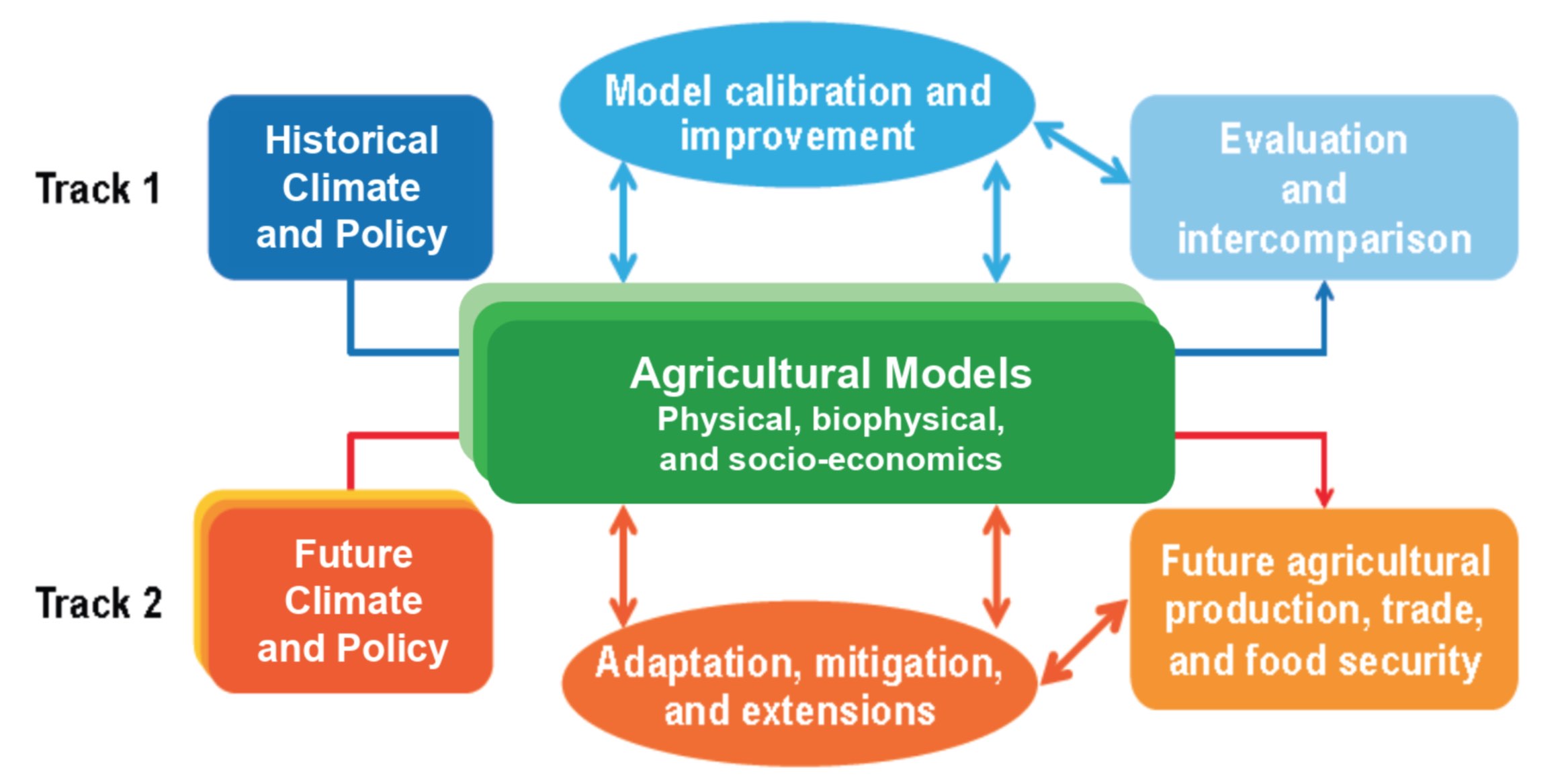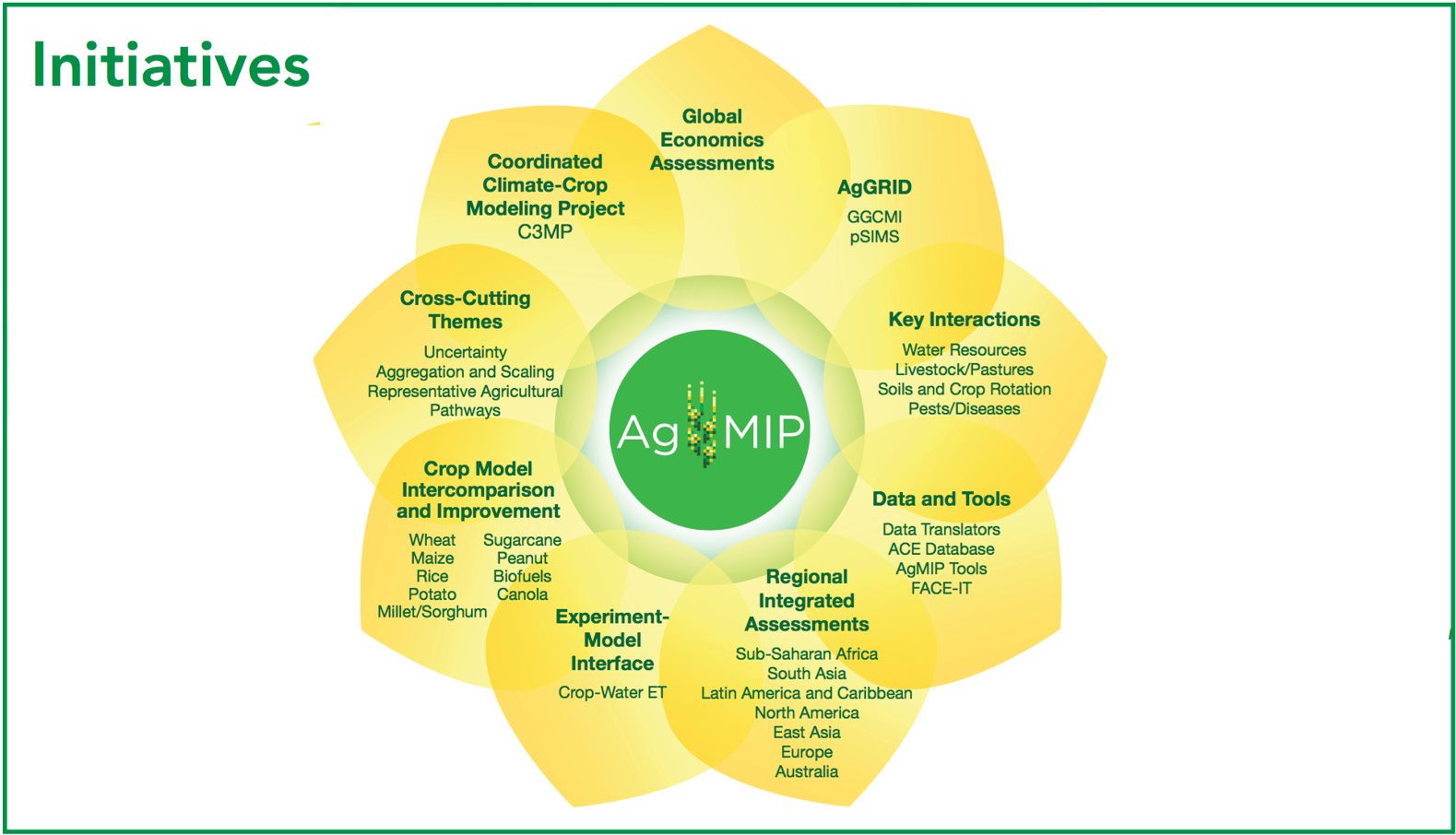Why AgMIP
Agricultural risks are growing. Decision-makers need probabilistic risk analysis to identify and prioritize effective adaptation and mitigation strategies.
Consistency is key. AgMIP is establishing research standards so future studies no lon- ger use different assumptions across regions and models.
Ongoing solutions. AgMIP is developing a rigorous process to evaluate agricultural models, which results in continuous model improvement.
Objectives
-
Improve agricultural models based on their intercomparison and evaluation using high-qual- ity global and regional data and best scienti c practices, and document improvements for use in integrated assessments.
-
Incorporate state-of-the-art climate, crop/ livestock, and agricultural economic model im- provements with stakeholder input into coordinated multi-model regional and global assess- ments of climate impacts and adaptation and of other key aspects of food systems.
-
Utilize multiple models, scenarios, locations, crops/livestock, and participants to explore uncertainty and the effects of data and method- ological choices.
-
Collaborate with regional experts in agronomy, animal sciences, economics, and climate to build a strong basis for model applications, addressing key climate-related questions, adaptation priorities, and sustainable intensi cation.
-
Improve scienti c and adaptive capacity in modeling for major agricultural regions in the developing and developed world, with a focus on vulnerable regions.
-
Develop modeling frameworks to facilitate data-sharing and to identify and evaluate promising adaptation technologies and policies and to prioritize strategies.
AgMIP’s Modeling and Assessment Framework
This diagram shows how AgMIP researchers use historical climate data to evaluate, intercompare, and improve crop/live- stock and economic models. Utilizing the same multi-model framework with future scenarios, the researchers assess the impacts of climate variability and change on local, regional, national, and global food production and food security.

Modified from Rosenzweig et al., 2013 AgForMet
Focus Areas
1. Next Generation Knowledge, Data, and Tools to improve projections of the systems, processes, and metrics needed to support effective decision making.
2. Coordinated Global and Regional Assessments of climate change impacts on agriculture and food secu- rity to consistently project the future implications of current investment and policy decisions around the world.
3. Modeling Sustainable Farming Systems to identify and prioritize transformations toward more sustainable agricultural systems while recognizing the potential for unforeseen socio-economic consequences.
What AgMIP has learned so far
- Tremendous interest in agricultural research community in interdisciplinary multi-model research and assessment
- Median of crop model ensembles reproduces observed yields
- ‘Best Practices’ for model calibration essential for rigorous results
- Crop responses to CO2, temperature, and water remain key sources of uncertainty
- Regional Integrated Assessments are extend- ing methods for projecting changes in farm systems
- Global crop yield impacts project greater vulnerability in lower latitudes and in earlier decades; model uncertainty now explicitly characterized
- Limitations in fresh water for irrigation may compound climate impacts in many regions, while abundance could help in others
- Agricultural prices projected to experience upward pressure


